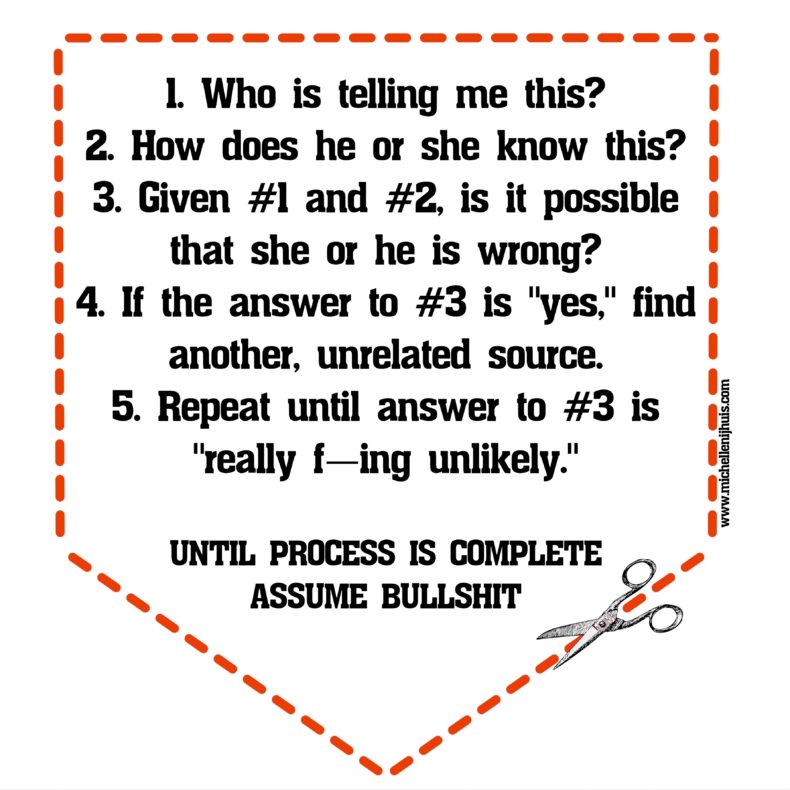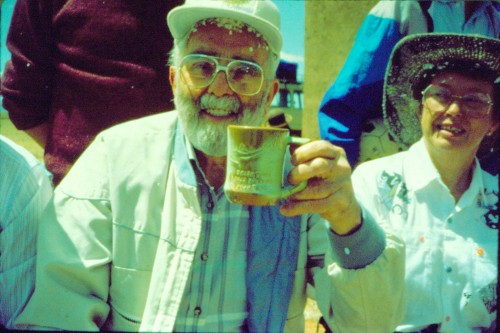LWON is celebrating the holidays by re-running some of our favorite posts. This post originally appeared in April 2014, but its applications multiply.
Wishing you a very happy—and bullshit-free—2015.
 I am often wrong. I misunderstand; I misremember; I believe things I shouldn’t. I’m overly optimistic about the future quality of Downton Abbey, and inexact in my recall of rock-star shenanigans. But I am not often—knock wood—wrong in print, and that’s because, as a journalist, I’ve had advanced training in Bullshit Prevention Protocol (BPP).
I am often wrong. I misunderstand; I misremember; I believe things I shouldn’t. I’m overly optimistic about the future quality of Downton Abbey, and inexact in my recall of rock-star shenanigans. But I am not often—knock wood—wrong in print, and that’s because, as a journalist, I’ve had advanced training in Bullshit Prevention Protocol (BPP).
Lately, as I’ve watched smarter and better-dressed friends believe all manner of Internet nonsense, I’ve come to appreciate my familiarity with BPP. Especially because we’re all publishers now. (Sharing a piece of news with 900 Facebook friends is not talking. It’s publishing.) And publishing bullshit is extremely destructive: It makes it harder for the rest of us to distinguish between bogus news and something real, awful, and urgent.
While BPP is not failsafe, generations of crotchety, underpaid, truth-loving journalists have found that it dramatically reduces one’s chances of publishing bullshit.
So I believe that everyone should practice BPP before publishing. No prior experience is required: Though it’s possible to spend a lifetime debating the finer points of BPP (and the sorely-needed news literacy movement wants high-school and college students to spend at least a semester doing so) its general principles, listed in a handy, portable, and free—free!—form above, are simple.
Here’s how they work in practice.







